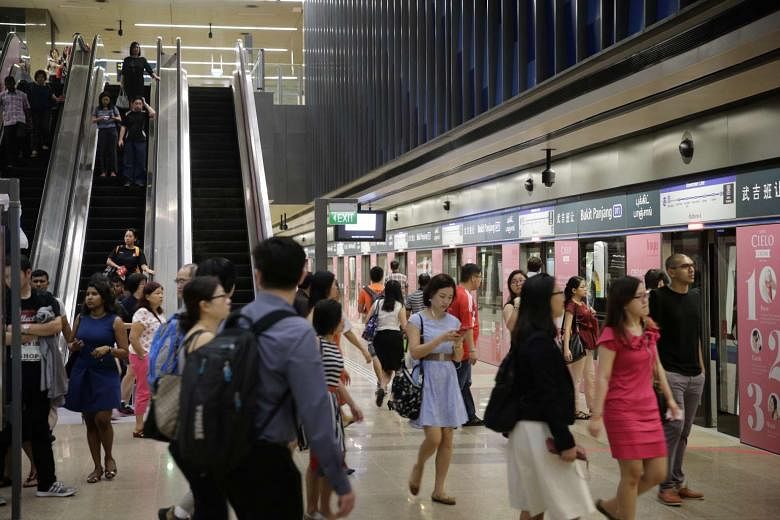More Singapore residents are taking public transport to work, with the addition of new train lines and an expansion in the fleet of public buses.
A government survey shows 58.7 per cent of residents aged 15 and older, or about 1.26 million people, took either the MRT or public bus, or a combination of both, to work last year.
This is a rise from 54.6 per cent in 2010, and 50.7 per cent a decade ago, according to the latest General Household Survey, conducted every ten years to capture the profile of the Singapore family.
Conversely, cars are falling out of favour. Last year, just 21.9 per cent (about 470,000 residents) drove to work, compared with 24.8 per cent (465,000 residents) in 2010, and 22.9 per cent (377,759 residents) in 2005.
These findings come as the Government has been ramping up public transport in recent years in its bid to make Singapore what Prime Minister Lee Hsien Loong called a "green, car-lite city".
A separate survey shows commuters are more satisfied with public transport. The annual Public Transport Customer Satisfaction Survey revealed that the satisfaction level for bus and train services has risen 0.5 percentage point to 91.8 per cent this year - the highest since 2010's 92.2 per cent.
Public transport is the preferred way to get to work for residents in Toa Payoh, Sembawang, Bukit Merah and Queenstown, with over six out of 10 workers choosing the train or bus. In contrast, in the better-off districts of Tanglin and Bukit Timah, almost 55 per cent drive to work.
A major reason for the switch is the addition of three MRT lines to the train network in the past 15 years. The Government is also pumping in billions of dollars on expanding the fleet of public buses.
The North-East Line connecting central Singapore to the north-eastern part of the island started operating fully in 2003, and the Circle Line, which covers central Singapore, Buona Vista and Paya Lebar, became fully operational in 2011. Parts of the Downtown Line running from Bukit Timah to Chinatown opened at the end of last year.
Mr Lim Biow Chuan, who sits on the Government Parliamentary Committee for Transport, said he is heartened by the survey findings. "In the past, even those who found driving to work expensive would still do so as they found public transport inconvenient.
"But the Government has been improving connectivity, for example, with the Downtown Line, and adding more buses and trains to shorten commuters' wait time. Overall, their experience has improved," he said.
Cost is a deterrent too. Ms Zhang Yunxi, 28, who manages customer experience at a technology company, owns a car but takes public transport to work. "I work in the Central Business District and it's costly to drive there. I would rather save than splurge money on driving."
Correction Note: An earlier version of the article stated that the General Household Survey was conducted once every five years. This is wrong. The survey is done once 10 years. We are sorry for the error.


